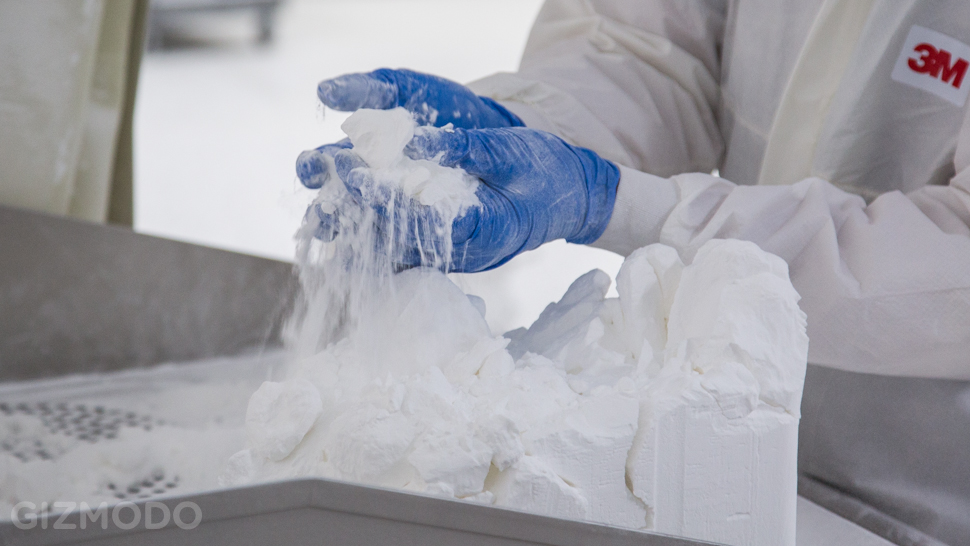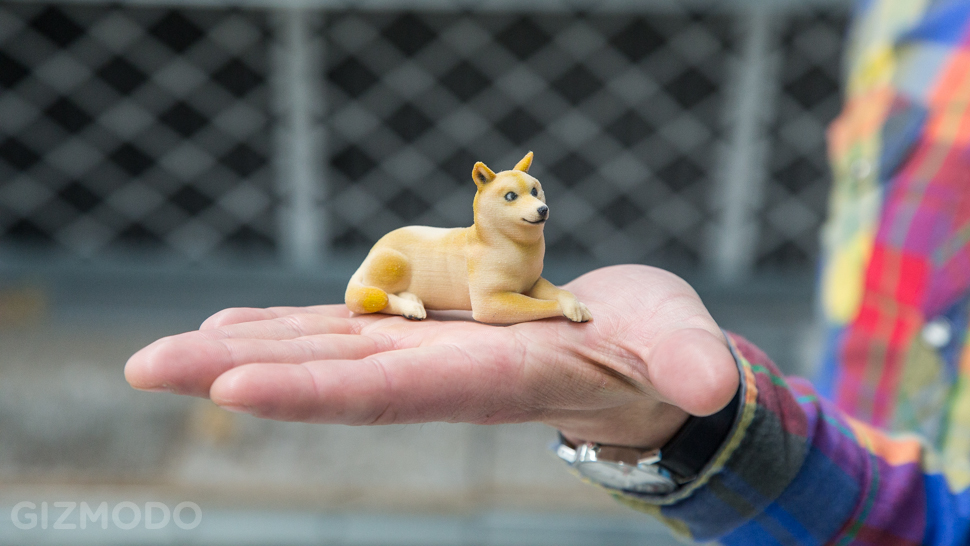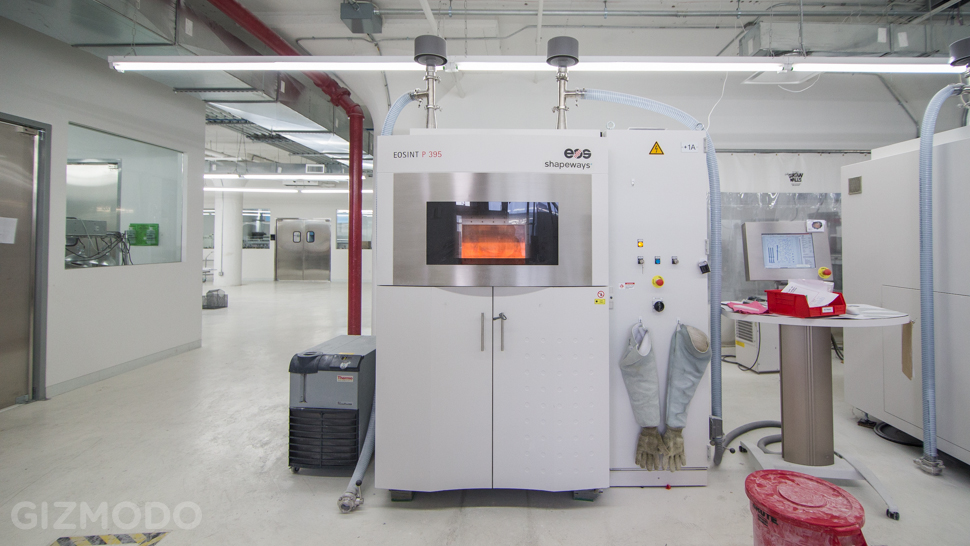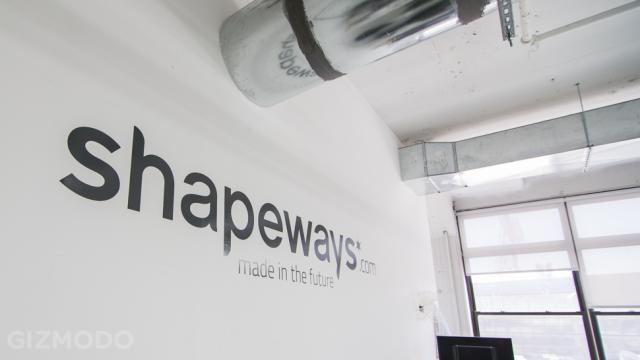When you walk into the Shapeways headquarters in a sprawling New York City warehouse building, it doesn’t feel like a factory. It’s something different, somehow unforgettable, inevitably new. As it should be. This is one of the world’s first full service 3D-printing factories, and it’s not like any factory I’ve ever seen.
Founded in the Netherlands in 2007 as a spinoff of Philips electronics, Shapeways is a truly unique and delightfully simple service. If you want an object 3D-printed, all you have to do is upload the design’s CAD file to Shapeways’ website, pay a fee that mostly just covers the cost of materials, and then wait. In a few days, Shapeways will send the 3D-printed object to you, nicely bubble-wrapped and ready for use. It’s effectively an on-demand manufacturing service, a factory at your fingertips in a way that’s wonderfully futuristic.
Aside from the windows that look on to the factory floor, Shapeways HQ looks just like any other start-up office. Colourful chairs surround laptop-littered desks. Employees drinking seltzer linger around a long lunch table in the back. It’s oddly quiet, and everything is coated in a fine layer of white dust, the cast-off material that didn’t quite make it into an object of its own.
If you didn’t know any better, you’d think it was some sort of art studio littered with hulking machines, perhaps for firing pottery or something. In fact, each of these closet-sized machines costs upwards of $US1 million and can 3D print about 100 objects at a time. Shapeways names all of them after old women because they require lots of care. The entire cast of Golden Girls is represented.

There’s actually not much to see inside the machines. A small window offers a peek into the actual printing area, an unassuming expanse of white powder that lights up every few seconds. Shapeways uses selective laser sintering (SLS) printers that enable them to print many objects at once and product higher quality products than some other additive manufacturing techniques.
That white powder lingering everywhere is the raw material for a 3D-printed object. The box lights up because a series of lasers are actually sintering the plastic in specific spots, as dictated by the design. An arm then moves over the surface, adding another layer of powder. Over the course of several hours, the sintered plastic becomes an object that’s supported by the excess powder. The process look almost surgical if you’re not familiar with the specifics of exactly what’s going on.

But, the printers don’t just spit out objects ready to go. The finished product is actually a large white cube that’s carefully moved from the machine to a nearby cooling rack. After all, it was just blasted with a bunch of hot lasers. Eventually, it’s up to a human to break apart the cube and find dozens of newly printed objects in the powder. It’s almost like digging for dinosaur bones. As Shapeways’ Savannah Peterson explained to me, “You feel like an archaeologist even if you’re just watching.”

She’s right. After I made my way around the factory floor, which is roughly half the size of a basketball court, I got a peek at this process. The guy doing the digging was wearing a protective jump suit and a large ventilator to keep from inhaling the powder. And despite the fact that large plastic curtains contained the breakout room, the powder gets everywhere. Suddenly, the light coating of dust that covers the whole factory made even more sense. By the end of the tour, I looked like a baker covered in flour.
That’s about as messy as it gets, though. The rest of the process is remarkably clean and streamlined, yielding some pretty incredible objects made not only out of plastic but also vari. The Shapeways website is full of curiosities, from delicate jewelry that can be printed in sterling silver to physical manifestations of internet memes that are printed in colour using a special printer that can handle rainbow hues.

The scope of what people order from Shapeways runs the gamut from replacement parts for gadgets and drone accessories, to more whimsical mathematical art. You can even 3D-print objects with moving parts.

It’s all pretty astounding, when you step back and look at what Shapeways is doing. Last year, when President Obama said that 3D printing was the future of American manufacturing, this is exactly what he was talking about. It’s also bringing a city like New York back to a time when production was a much bigger part of its heart and soul. “Having a factory like this in New York City is something that’s starting to happen again,” our Shapeways host Blair Baumwell said after the tour. “And that hasn’t happened in a long time.”
Shapeways wants to build these factories all over the world. In fact, the company is currently exploring where its next facility might go. Shapeways will ship around the world, but the idea is to localise the whole process as much as possible. And yes, in a few more years everybody might have a 3D printer in their office; the barrier to entry is getting lower every day. But Shapeways is giving anybody the ability to take advantage of the technology today, and with a level of detail that desktop devices can’t dream of. It’s efficient. It’s highly automated. And when you see it in person, it’s damned impressive.

